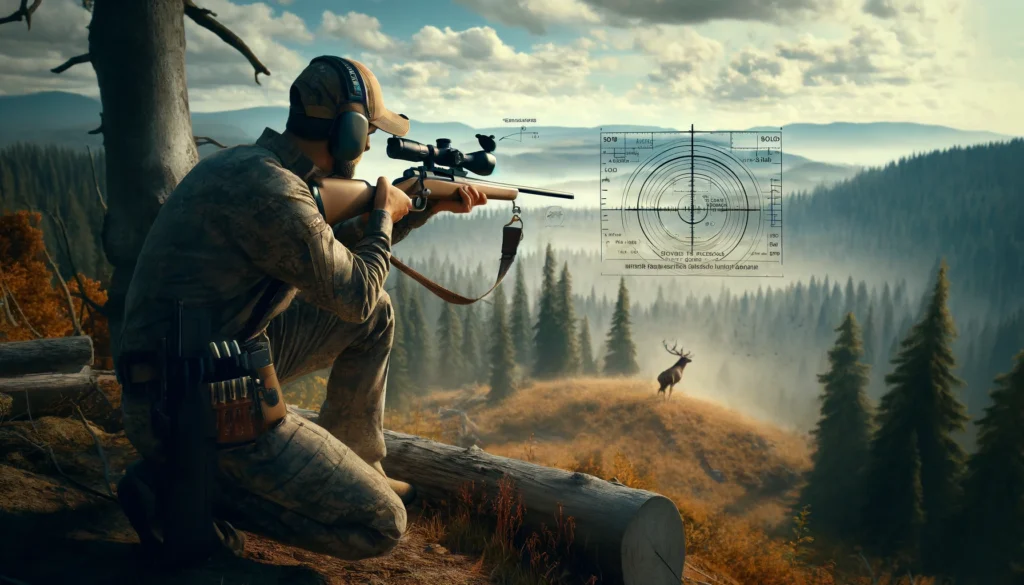Understanding the Maximum Effective Range: Essentials for Hunters and Marksmen

Table of Contents
- Introduction
- Factors Influencing Maximum Effective Range
- Calculating and Testing Maximum Effective Range
- Ethical Considerations in Determining Effective Range
- 5. Optics and Sighting Systems
- 6. Understanding Animal Anatomy
- 7. Mental Preparation and Decision Making
- 8. Continuous Education and Training
- 9. Legal and Ethical Responsibilities
- Conclusion
- Frequently Asked Questions (FAQs)
Introduction
The concept of maximum effective range is crucial for hunters and marksmen, defining the furthest distance at which a shooter can reasonably expect to hit a target accurately and deliver sufficient power for a humane kill. This range varies significantly based on the weapon, ammunition, environmental conditions, and the shooter’s skill.
Factors Influencing Maximum Effective Range
1. Weapon Type and Specifications
- Firearms: Characteristics such as barrel length, caliber, and action type affect velocity and accuracy, thus influencing the effective range.
- Bows and Crossbows: The draw weight, arrow type, and bow design play critical roles in determining how far and accurately an arrow can be shot.
2. Ammunition and Projectiles
- Ballistics: The design and weight of bullets or arrowheads, along with the powder load (in firearms), impact the trajectory, stability, and energy retention over distance.
- Aerodynamics: The aerodynamic efficiency of a projectile influences how it will perform against air resistance, affecting its effective range.
3. Environmental Conditions
- Wind and Weather: Wind speed and direction can alter a projectile’s path, while extreme temperatures and humidity can affect projectile velocity and flight stability.
- Altitude: Higher altitudes, with thinner air, can extend the effective range by reducing air resistance.
4. Shooter’s Skill and Experience
- Accuracy and Precision: A shooter’s ability to aim and control their breathing and trigger pull significantly affects the maximum effective range.
- Judgment: Experience and skill in judging distances, wind speed, and elevation changes are critical for estimating the effective range in varied terrains.
Calculating and Testing Maximum Effective Range
Ballistic Calculators and Software
- Utilize ballistic calculators and software to input specific data about your weapon, ammunition, and environmental conditions to estimate effective range.
Range Practice and Field Testing
- Practice at a range to test the limits of your equipment and skills in controlled conditions.
- Field testing in conditions similar to your hunting or shooting environment provides real-world insights into your effective range.
Ethical Considerations in Determining Effective Range
Responsible Shooting
- Understanding the maximum effective range is essential for ethical hunting practices, ensuring humane kills without causing unnecessary suffering to the animal.
Safety
- Knowledge of your weapon’s effective range is also a safety consideration, helping prevent accidental harm to unintended targets beyond the anticipated point of impact.
Expanding on the complexities of understanding and optimizing the maximum effective range in hunting and shooting, let’s delve deeper into additional strategies and considerations that can enhance a shooter’s or hunter’s proficiency and ethical engagement with their sport.
5. Optics and Sighting Systems
5.1 Importance of Quality Optics
- Enhanced Accuracy: High-quality scopes and sighting systems can significantly improve accuracy over long distances, helping shooters make more informed and precise shots within their effective range.
5.2 Calibration and Maintenance
- Regular Check-ups: Regularly calibrating your optics and maintaining them in pristine condition ensures that they perform optimally when you need them most.
6. Understanding Animal Anatomy
6.1 Vital Zone Knowledge
- Ethical Harvesting: For hunters, knowledge of an animal’s anatomy and vital zones is paramount to ensure that shots at the edge of the effective range still have the potential for a humane kill.
6.2 Practice and Simulation
- Target Practice: Using 3D animal targets or simulations can help hunters practice shot placement, adjusting for different distances and angles to mimic real hunting scenarios.
7. Mental Preparation and Decision Making
7.1 Situational Awareness
- Quick Thinking: Being mentally prepared to assess the viability of a shot quickly, considering the maximum effective range and current conditions, is crucial for ethical decision-making.
7.2 Stress Management
- Under Pressure: Learning to manage the adrenaline and stress of a hunting or shooting scenario can help maintain clarity and judgment, ensuring decisions fall within the bounds of safe and effective range practices.
8. Continuous Education and Training
8.1 Advanced Courses and Certifications
- Lifelong Learning: Engaging in advanced hunting and shooting courses, as well as obtaining relevant certifications, can provide deeper insights into extending and accurately determining your effective range.
8.2 Learning from Experts
- Mentorship: Seeking advice and learning from experienced hunters and marksmen can offer practical tips and strategies that textbooks and courses may not cover.
9. Legal and Ethical Responsibilities
9.1 Staying Informed on Laws and Regulations
- Compliance: Keeping abreast of local, state, and federal regulations regarding hunting and shooting distances ensures that practices remain within legal parameters.
9.2 Advocacy for Ethical Practices
- Community Engagement: Being an advocate for responsible and ethical hunting and shooting within the community promotes a culture of respect and care for wildlife and public safety.
Conclusion
The maximum effective range is a dynamic concept influenced by multiple factors, requiring ongoing assessment and understanding. Hunters and marksmen should continuously strive to know their capabilities and limitations, aiming to make ethical, accurate, and safe shots in every scenario.
Frequently Asked Questions (FAQs)
How can I improve my effective range?
- Regular practice, advanced training, and using quality equipment can help extend your effective range. Additionally, studying ballistics and environmental effects will enhance your understanding and capabilities.
Does the effective range differ for moving targets?
- Yes, moving targets require anticipation and adjustment in aiming, reducing the effective range due to the increased difficulty in making a precise shot.
Can technological advancements significantly extend a weapon’s effective range?
- Innovations in firearm and ammunition technology, as well as in archery equipment, continue to push the boundaries of effective range, offering improved accuracy and power at longer distances.







